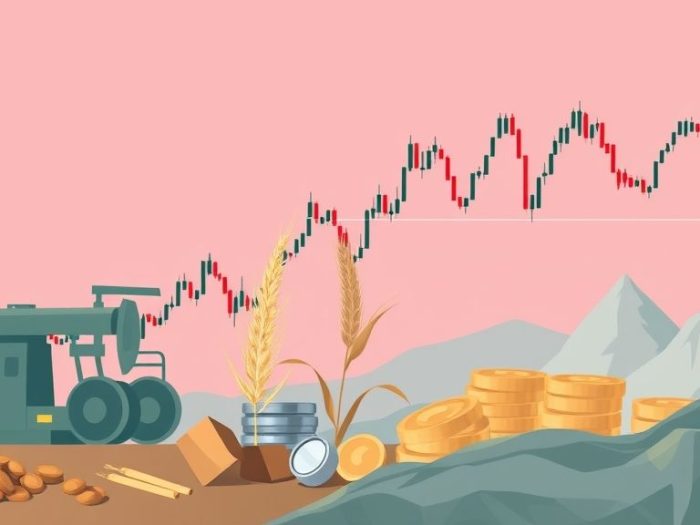Technical analysis is a valuable tool for commodity traders, helping them identify
potential trading opportunities by analyzing price charts and market data. While no
pattern guarantees success, some have proven more reliable than others. This article
explores the most reliable technical analysis patterns for commodity trading.
Understanding Technical Analysis in Commodity Trading
Technical analysis in commodities involves studying historical price and volume data to
predict future price movements. It’s based on the idea that prices move in trends and
that history tends to repeat itself.
Key Technical Analysis Concepts
-
Trend: The overall direction of price movement (uptrend, downtrend,
sideways). -
Support and Resistance: Price levels where the price tends to stop
and reverse. -
Chart Patterns: Recognizable formations on a price chart that
predict potential price changes. -
Indicators: Calculations based on price and volume data that
provide trading signals.
Most Reliable Technical Analysis Patterns for Commodity Trading
1. Trend Lines
Trend lines are lines connecting a series of higher lows (uptrend) or lower highs
(downtrend) to visualize the prevailing trend.
-
Reliability: Trend lines are highly reliable for identifying and
trading with the trend. -
How to Use:
- Buy near an uptrend line and sell near a downtrend line.
- Trade trend line breaks as potential entry points.
2. Breakouts
A breakout occurs when the price moves above a resistance level or below a support
level.
-
Reliability: Breakouts can be reliable, especially when confirmed
by high volume. -
How to Use:
- Enter a long position when the price breaks above resistance.
- Enter a short position when the price breaks below support.
3. Fibonacci Retracements
Fibonacci retracement levels are horizontal lines that indicate potential support
or resistance based on Fibonacci ratios.
-
Reliability: Fibonacci levels are often respected by the price,
especially in trending markets. -
How to Use:
- Look for price to retrace to Fibonacci levels (e.g., 38.2%, 50%, 61.8%) after a significant move.
- Enter trades near these levels, expecting a bounce or rejection.
4. Moving Averages
Moving averages smooth out price data to identify trends and potential support/resistance.
-
Reliability: Longer-term moving averages (e.g., 200-day) are
more reliable for identifying major trends. -
How to Use:
- Buy when the price crosses above a moving average in an uptrend.
- Sell when the price crosses below a moving average in a downtrend.
5. Volume
Volume represents the number of contracts traded in a given period.
-
Reliability: Volume is crucial for confirming the strength of
price movements. -
How to Use:
- Increasing volume during a price trend strengthens the trend.
- High volume during a breakout confirms the validity of the breakout.
Patterns to Use with Caution
While the patterns above are generally considered reliable, some patterns can be more
subjective or provide less consistent signals.
Important Considerations
- Context: Always analyze patterns within the broader market context.
-
Timeframes: Higher timeframes generally provide more reliable
signals. -
Confirmation: Combine patterns with other technical indicators and
fundamental analysis. - Risk Management: Proper risk management is essential.
Conclusion
Technical analysis can be a valuable tool for commodity traders. By focusing on
reliable patterns like trend lines, breakouts, Fibonacci retracements, moving
averages, and volume, you can improve your ability to identify trading opportunities.
However, remember that no pattern guarantees success, and careful analysis and risk
management are crucial.
Related Keywords
Commodity technical analysis, commodity trading patterns, best commodity trading
patterns, technical analysis for commodities, commodity price patterns, commodity
trading strategies, commodity trading indicators, commodity market analysis,
agricultural commodity trading, energy commodity trading.
Frequently Asked Questions (FAQ)
1. What is technical analysis in commodity trading?
Technical analysis in commodities involves studying historical price and
volume data to predict future price movements.
2. What are the key concepts of technical analysis?
Key concepts include trend, support and resistance, chart patterns, and
indicators.
3. Why are trend lines reliable in commodity trading?
Trend lines are reliable for identifying and trading with the prevailing
trend.
4. What is a breakout pattern?
A breakout occurs when the price moves above a resistance level or below a
support level, indicating a potential trend change.
5. How reliable are breakouts?
Breakouts can be reliable, especially when confirmed by high trading volume.
6. What are Fibonacci retracements?
Fibonacci retracement levels are horizontal lines that indicate potential
support or resistance based on Fibonacci ratios.
7. How reliable are Fibonacci retracements?
Fibonacci levels are often respected by the price, particularly in trending
markets.
8. How do moving averages help in commodity trading?
Moving averages smooth out price data to identify trends and potential
support/resistance.
9. Which moving averages are most reliable?
Longer-term moving averages, like the 200-day, are generally more reliable
for identifying major trends.
10. How important is volume in confirming price movements?
Volume is crucial for confirming the strength of price trends and the validity
of breakouts.



